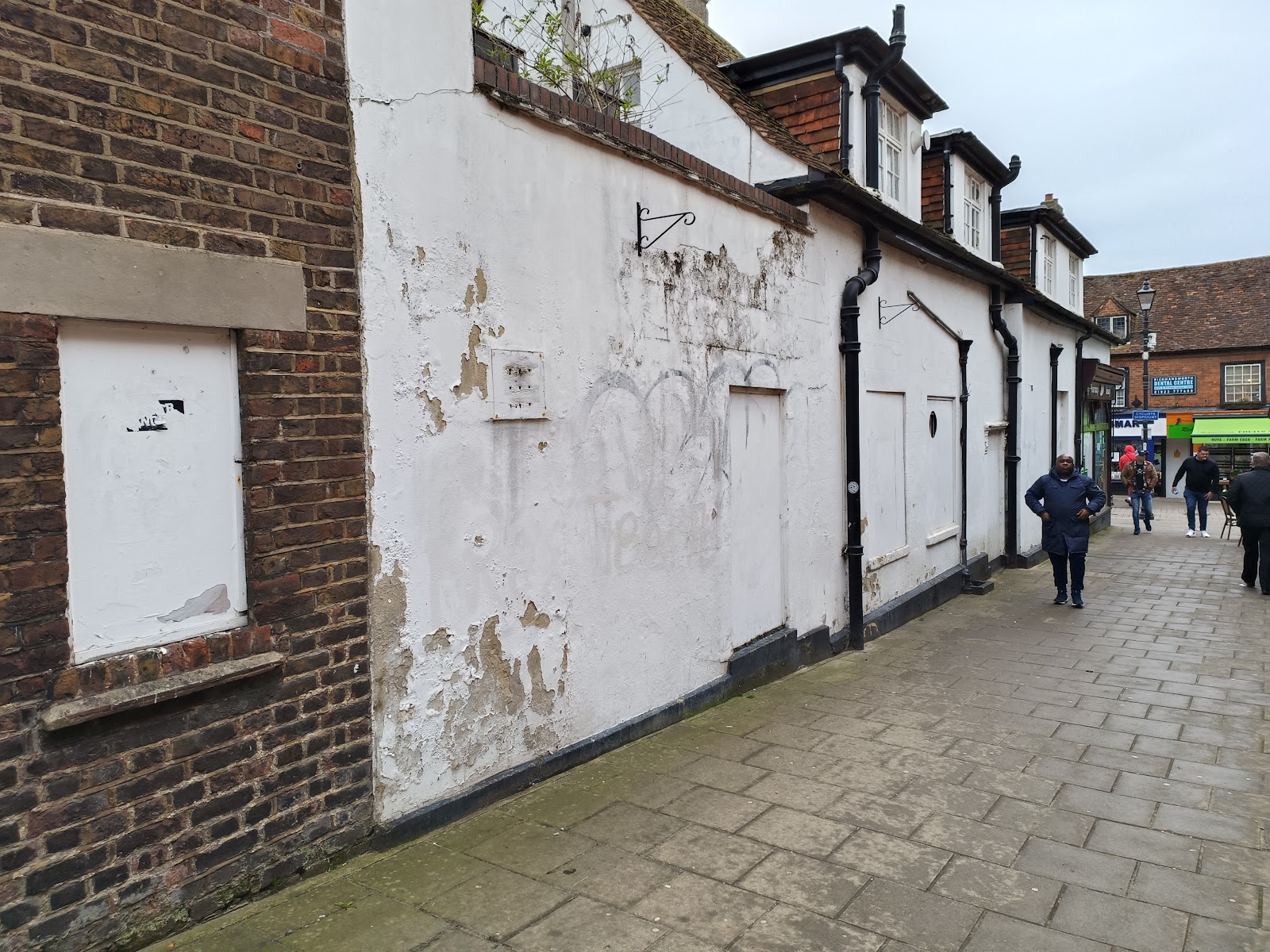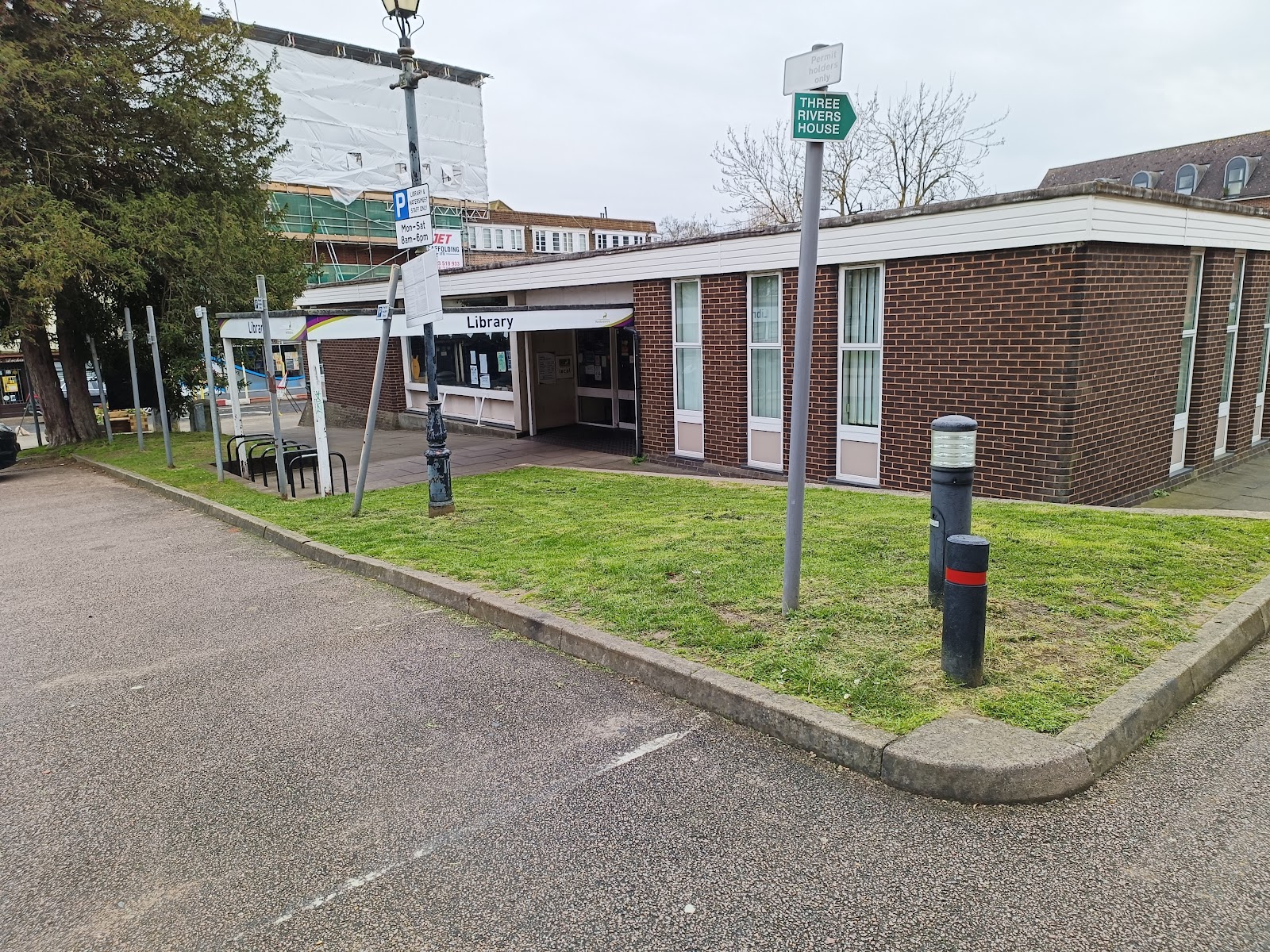Rickmansworth (town centre)
I recently stayed over night in Rickmansworth, a small town in southwest Hertfordshire, known as Ricky to the locals, of whom I was one until the mid-eighties.
A short way out of London, it developed after the arrival of the Grand Union Canal, on its way from London to Birmingham. Water has been a big part of Ricky - it is where the Rivers Gade and Chess join the River Colne. At one time there were several paper mills in the area, and in fact one area is called Mill End. When the railway arrived, water cress was an important crop - the railway allowed water cress to be harvested in the morning and in London on people's tables for dinner.
Today, the local council is called Three Rivers.
We will start with the church of St Mary, an attractive building with a squat tower, built of flint for the most part.
Part of a war memorial stands in the grounds - the plinth, but not the statue. The statue depicts a lion mauling an eagle, and was deemed to violent for the church. I am not sure where it is now, but it used to be near the library.
The original station was opposite the church - more or less where the above photo was taken from. It opened in 1862, and ran to Watford Junction. It closed to passenger in 1952, and to goods in 1967, and no trace of the station remains.
Just north of the church are two fine, old buildings. The one next to the church is called the Priory, while the next is a pub called the Feathers.
I remember visiting the Feathers years ago, and while the interior has been changed, it retains it charm and well worth a visit.
Venturing further up Church Street, there is an eclectic mix of buildings.
The road crosses a small river, known as "The Town Ditch".
This is the view as we approach the High Street. The doors to Hudson's are only about five foot high! I guess people were shorter back then.
The mock-tudor building now called Minori used to be a rather smart café and delicatessen called the "Swiss" until about twenty years ago.
The building on the corner looks to be thirties.
Heading into the High Street we find the ubiquitous Wetherspoons. This one takes its name from William Penn, who lived locally, and is best known for founding the American state of Pennsylvania.
Boots and Smiths have been there forever. This may well be the smallest branches of each in the country; Boots is especially small.
Just left of Boots is "The Famous alleyway", a TikTok thing by the Alleyway King, noted on Google maps. Does not look that special to me...
Just visible in the image above, the road to the right is Station Road, at the top of which is Rickmansworth Station.
The Metropolitan Railway electrified the line to Rickmansworth in 1925. Trains were hauled by electric locos from London, and then swapped to steam for the onward journey. Trains to London, of course, did the reverse. It was only in about 1960 that the line was electrified as far as Amersham and Chesham (and stations beyond Amersham passed to British Railways).
Rather old-fashioned - especially for the London Underground - it still has a water tower.
And a ladies waiting room.
Trains to London took 33 minutes in 1930. Nowadays they are timetabled to take three minutes longer!
Now heading east along the High Street, there is the library, which I remember visiting many times as a kid.
In fact I still have my library card. May not be valid now...
Next to the library is Watersmeet, Ricky's cinema, theatre and event hall, which opened in 1975. The only time I remember going there was to see Abba: Arrival, but I am sure there were other occasions.
The road curves to the left, and we find another delightful pub, the Coach and Horses. This too has kept its charm inside as well as out.
Worth also mentioning the Fox and Hounds, and the Western, at the west en of the High Street, and the White Bear beyond the end of Church Street. A good number for a town this size, and all looking in good state.
Worth noting that this was the home of George Elliot (Mary Ann Evans) for a while, when she was writing Daniel Deronda. Back then it was called The Elms.























Comments
Post a Comment